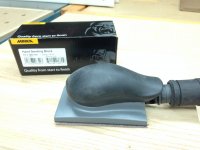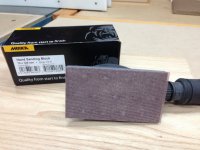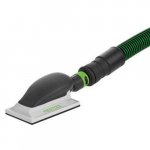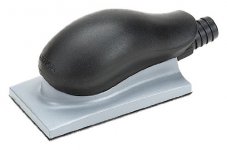QuailRider43
Member
- Joined
- Feb 16, 2015
- Messages
- 85
I'm trying to poly varnish a workshop countertop to practice my finishing skills, and quickly coming to the realization that (a) I hate finishing, (b) I hate hand sanding. After first coat of poly, I got lazy and decided to just use 320 grit in my old 5" random orbit sander (still saving my pennies for that fancy Festool sander collection). I very quickly sanded right through the first coat of varnish I had applied (which is just as well, as I wasn't happy with it). Next time I'm going to try an oil/varnish blend or a wipe-on type poly which will be more forgiving to apply, but I'll still need to sand between coats. So I arrive at the main question: do people use their sanders between finish coats on large flat projects, or bite the bullet and hand sand everything between coats? Can a 5 mm stroke sander work here, or is this only the realm of 3 mm stroke finish sanders?




